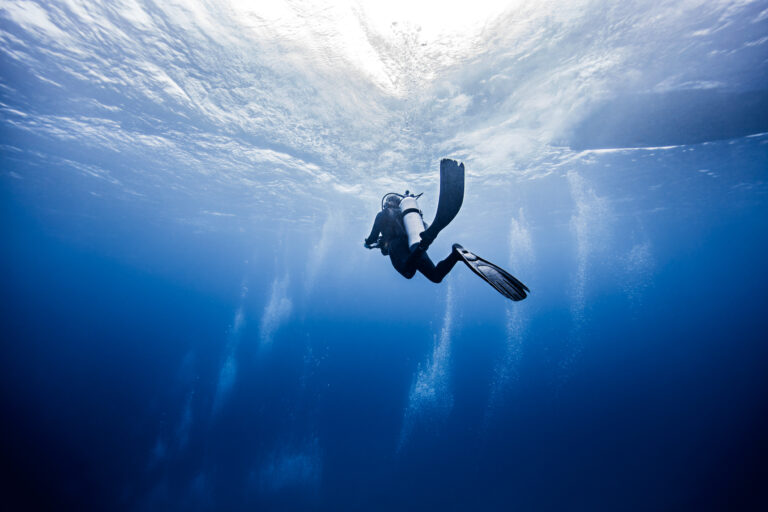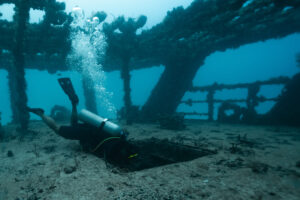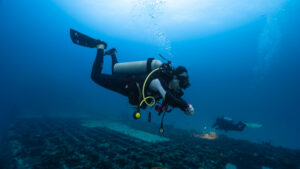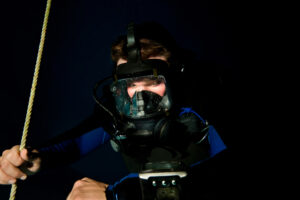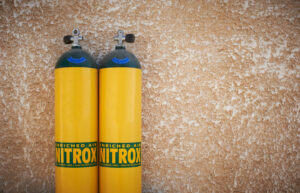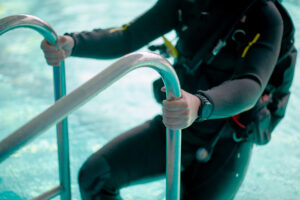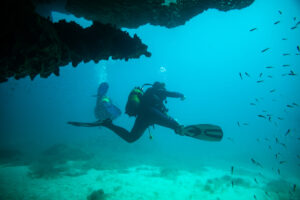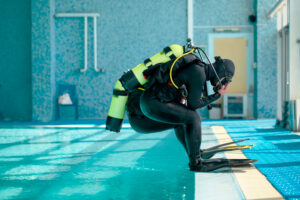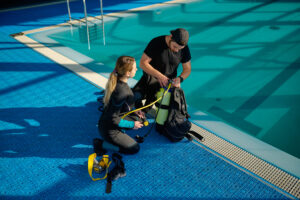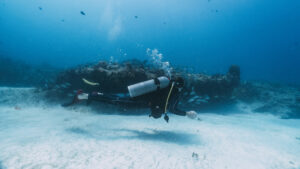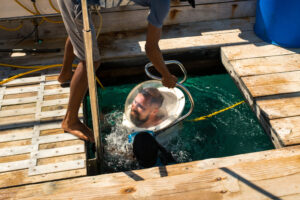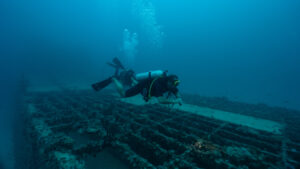What is Intermediate Pressure?
Intermediate pressure is a critical concept in scuba diving, referring to the pressure between the first and second stages of a diver’s regulator system. This pressure is crucial for the proper functioning of the diving equipment, ensuring that the diver can breathe comfortably and safely underwater. Understanding intermediate pressure is essential for both recreational and technical divers, as it affects the overall performance and safety of the diving gear. This article delves into the principles, mechanics, equipment implications, maintenance, environmental impacts, and advanced applications of intermediate pressure in scuba diving.
Principles of Scuba Diving Pressure
Scuba diving involves various types of pressures that impact both the diver and their equipment. These include ambient pressure, tank pressure, and intermediate pressure. Ambient pressure is the pressure exerted by the surrounding water and increases with depth. For every 10 meters (32.8 feet) of seawater, the pressure increases by approximately 1 atmosphere (atm). This increase affects the diver’s body and the equipment they use, necessitating careful regulation of breathing gas delivery.
Tank pressure refers to the high pressure of the compressed air stored in the scuba tank, typically around 200 to 300 bar (2,900 to 4,350 psi) when full. This high pressure is not directly suitable for breathing and must be reduced to a more manageable level, which is where intermediate pressure comes into play. Intermediate pressure, also known as interstage pressure, is the reduced pressure output from the first stage regulator. It is this pressure that feeds into the second stage regulator, allowing the diver to breathe comfortably.
The first stage regulator plays a crucial role in converting the high tank pressure to intermediate pressure. This stage is designed to maintain a consistent intermediate pressure regardless of the fluctuations in the tank pressure as air is consumed. Typically, the intermediate pressure ranges from 8 to 10 bar (116 to 145 psi) above ambient pressure. This ensures a smooth and reliable air supply to the second stage, which further adjusts the pressure to match the diver’s breathing requirements.
Mechanics of Intermediate Pressure
Intermediate pressure is generated by the first stage regulator, a sophisticated piece of equipment that attaches directly to the scuba tank. The first stage regulator reduces the high-pressure air from the tank to a lower, more manageable intermediate pressure. This process involves intricate mechanisms, including high-pressure seats, springs, and diaphragms or pistons, which work together to maintain a stable intermediate pressure output.
In a diaphragm regulator, the high-pressure air from the tank enters a chamber separated by a flexible diaphragm. As the diver breathes, the diaphragm moves, allowing high-pressure air to flow into a second chamber where it is reduced to intermediate pressure. In contrast, piston regulators use a piston mechanism to achieve the same result. Both types of regulators are designed to compensate for changes in ambient pressure, ensuring consistent intermediate pressure delivery at different depths.
The intermediate pressure is crucial for the proper functioning of the second stage regulator. The second stage further reduces the intermediate pressure to ambient pressure, matching the diver’s breathing demands. This stage uses a demand valve mechanism, which opens and closes in response to the diver’s inhalation and exhalation. A stable intermediate pressure ensures that the demand valve operates smoothly, providing a reliable and comfortable breathing experience.
The standard intermediate pressure range is typically between 9 and 10 bar (130 to 145 psi) above ambient pressure. This range can vary slightly depending on the regulator design and manufacturer specifications. It is essential for divers to be aware of their equipment’s intermediate pressure settings, as deviations from the norm can indicate potential issues with the regulator’s performance.
Intermediate Pressure and Diving Equipment
Several components of the diving gear rely on the consistent and proper regulation of intermediate pressure. The second stage regulator, inflator hoses, and pressure gauges are all directly affected by intermediate pressure. The second stage regulator, as previously discussed, reduces intermediate pressure to ambient pressure for breathing. A stable intermediate pressure ensures that the second stage operates efficiently, providing the diver with a continuous and effortless air supply.
Inflator hoses are used to control buoyancy by inflating and deflating the buoyancy control device (BCD) and drysuit. These hoses are connected to the first stage regulator and rely on intermediate pressure to function correctly. Properly maintained intermediate pressure ensures that inflator hoses can deliver the precise amount of air needed to achieve neutral buoyancy or make necessary adjustments while underwater.
Pressure gauges, including submersible pressure gauges (SPGs) and console gauges, also depend on intermediate pressure. These gauges measure the air pressure in the tank and provide divers with critical information about their remaining air supply. Accurate intermediate pressure ensures that pressure gauges deliver reliable readings, allowing divers to monitor their air consumption effectively and plan their ascent accordingly.
Intermediate pressure is not only vital for the operation of these components but also for the overall safety of the diver. Malfunctioning intermediate pressure can lead to issues such as free-flowing regulators, where air continuously flows from the second stage, or insufficient air delivery, making it difficult for the diver to breathe. Regular maintenance and checks are essential to ensure that the intermediate pressure remains within the recommended range and that all related components function correctly.
Maintenance and Troubleshooting
Maintaining the proper intermediate pressure is crucial for the safety and functionality of scuba diving equipment. Regular maintenance of the regulator system is necessary to ensure that intermediate pressure remains within the optimal range. This involves periodic servicing by a certified technician, who will inspect and replace worn-out parts, clean the components, and adjust the intermediate pressure if needed.
Common issues related to intermediate pressure can include free-flowing regulators, where the second stage continuously releases air, or slow inflation of the BCD or drysuit. These problems often indicate that the intermediate pressure is too high or too low. Divers should be familiar with the symptoms of intermediate pressure issues and know how to perform basic troubleshooting.
To diagnose intermediate pressure problems in the field, divers can use a simple intermediate pressure gauge. This tool attaches to one of the low-pressure ports on the first stage regulator and provides a reading of the intermediate pressure. If the pressure falls outside the normal range of 9 to 10 bar (130 to 145 psi) above ambient pressure, it indicates a problem that needs to be addressed.
Regular maintenance should also include checking the condition of the O-rings, inspecting hoses for signs of wear or damage, and ensuring that the first and second stage regulators are securely connected. It is important to follow the manufacturer’s recommendations for servicing intervals and to have the equipment serviced by authorized personnel to maintain warranty and safety standards.
In addition to professional servicing, divers should perform routine checks before each use. This includes testing the regulator system for proper airflow, checking the pressure gauge readings, and ensuring that the inflator hoses are functioning correctly. By maintaining a vigilant approach to equipment care, divers can minimize the risk of intermediate pressure-related issues and ensure a safe and enjoyable diving experience.
Impact of Environmental Factors on Intermediate Pressure
Environmental factors such as temperature, depth, and exposure to saltwater can significantly impact the performance of the intermediate pressure system. Temperature changes can affect the materials and components of the regulator, leading to variations in intermediate pressure. Cold water diving, in particular, can pose challenges, as low temperatures can cause regulators to freeze, potentially leading to free-flowing or malfunctioning equipment.
To mitigate the effects of cold water, some regulators are designed with environmental seals that prevent water from entering the internal mechanism. These seals help maintain consistent intermediate pressure and reduce the risk of freezing. Divers planning to dive in cold environments should consider using regulators specifically designed for such conditions and ensure that their equipment is adequately serviced and maintained.
Depth also plays a role in intermediate pressure performance. As divers descend, the ambient pressure increases, requiring the regulator to adjust the intermediate pressure accordingly. Modern regulators are designed to automatically compensate for depth changes, ensuring stable intermediate pressure delivery. However, it is crucial for divers to understand how their equipment performs at different depths and to be aware of any potential limitations.
Saltwater exposure can lead to corrosion and buildup of salt deposits on the regulator components, affecting intermediate pressure regulation. Rinsing the equipment thoroughly with fresh water after each dive and performing regular maintenance can help prevent saltwater-related issues. Divers should also be mindful of storing their equipment in a dry, cool place to avoid prolonged exposure to moisture and salt.
By understanding and addressing the impact of environmental factors, divers can ensure that their intermediate pressure system remains reliable and performs optimally under various conditions. Proper equipment selection, regular maintenance, and adherence to best practices are essential for managing the challenges posed by different diving environments.
Advanced Applications of Intermediate Pressure
Intermediate pressure plays a crucial role in advanced and technical diving applications, where precise control and reliability are paramount. In technical diving, divers often use more complex setups, including multiple tanks, rebreathers, and manifold systems. These configurations require meticulous regulation of intermediate pressure to ensure the safe and efficient operation of the equipment.
Rebreathers, which recycle exhaled gas and add oxygen to maintain a breathable mix, rely heavily on stable intermediate pressure for their various components. The first stage regulator in a rebreather system reduces the tank pressure to intermediate pressure, which is then used to drive the rebreather’s gas addition and scrubber systems. Consistent intermediate pressure is essential for maintaining the correct gas mix and ensuring the diver’s safety.
In manifold systems used in technical diving, intermediate pressure is critical for balancing the gas supply between different tanks. These systems allow divers to switch between gas sources or use multiple gases during a single dive. Accurate intermediate pressure regulation ensures that the gas flow remains stable and that the diver can manage their gas supply effectively.
Extended range and decompression diving also depend on precise intermediate pressure control. Divers undertaking these dives often carry multiple regulators and gas mixes, requiring careful monitoring and adjustment of intermediate pressure. Any deviation can impact the diver’s ability to access the correct gas mix at the right time, which is crucial for safe decompression and ascent.
Overall, intermediate pressure is a fundamental aspect of advanced diving techniques. Divers engaged in these activities must have a deep understanding of their equipment and how intermediate pressure
affects its performance. Regular training, equipment checks, and adherence to safety protocols are essential for managing the complexities of technical diving and ensuring a successful and safe diving experience.
Key Takeaways
Intermediate pressure is a vital component of scuba diving, essential for the proper functioning and safety of diving equipment. Understanding its principles, mechanics, and impact on various gear components helps ensure a reliable and enjoyable underwater experience. Regular maintenance, awareness of environmental factors, and knowledge of advanced applications are crucial for managing intermediate pressure effectively. By prioritizing these aspects, divers can enhance their safety and confidence while exploring the underwater world.

